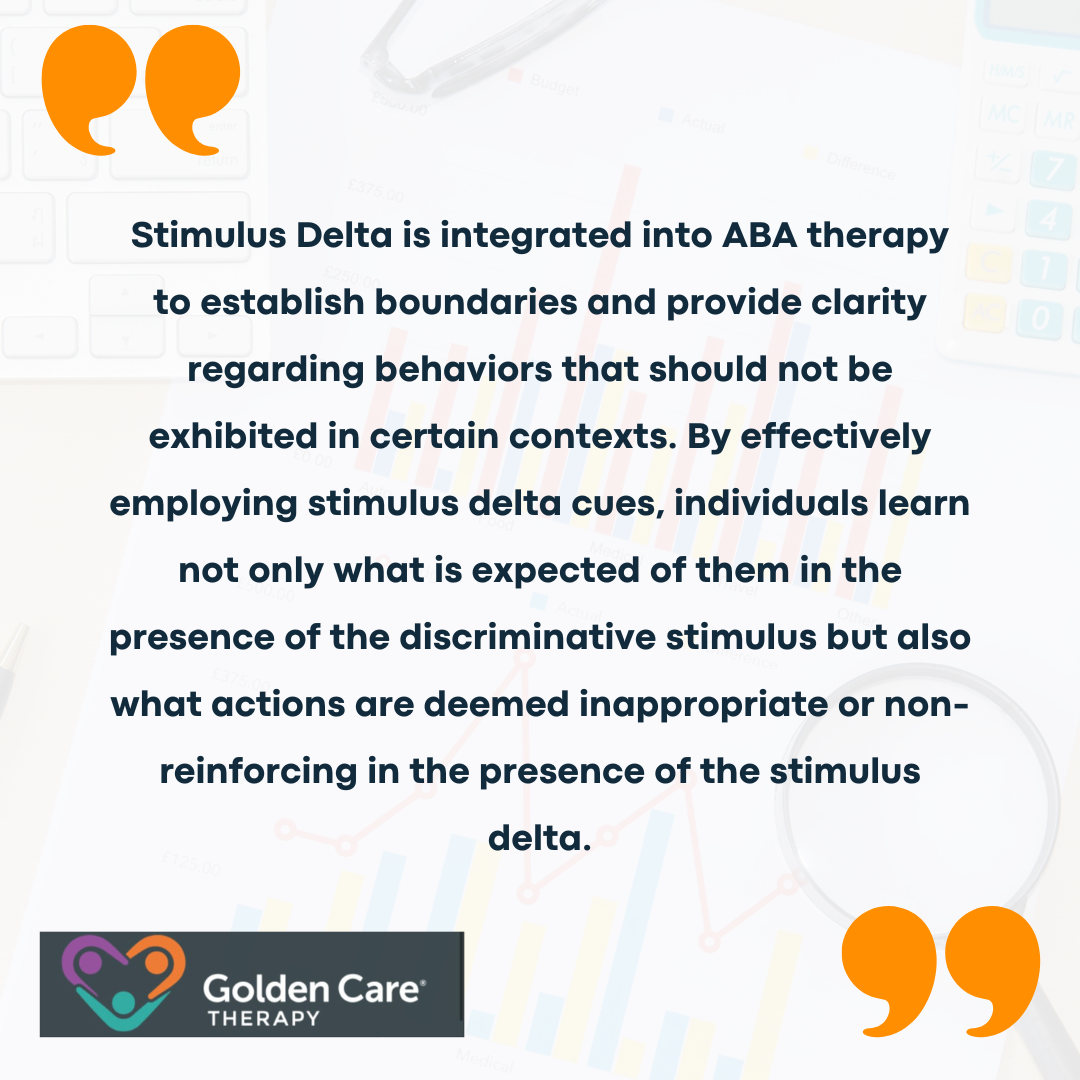
Table of Contents
SD, or “discriminative stimulus,” is a key concept in Applied Behavior Analysis therapy. It’s a signal or cue that tells someone when a specific behavior will lead to a reward.
Understanding how SD works can help shape positive behaviors by teaching individuals when to respond in certain ways. This approach is widely used in ABA therapy to encourage learning and skill development by reinforcing desired actions at the right times.
What is Discriminative Stimulus in ABA Therapy?
In Applied Behavior Analysis therapy, SD stands for discriminative stimulus. This is a cue or signal that prompts a specific behavior by indicating that reinforcement is available if the desired response is performed.
For example, when a therapist gives a verbal instruction like “sit down,” this becomes the SD for the child to sit because following the instruction will likely result in a reward or positive reinforcement, such as praise or a favorite toy.
The SD helps individuals know which behaviors are appropriate in a given situation and sets the stage for learning new skills.
SD is crucial for teaching behavior through clear and consistent instructions. The therapist pairs the SD with reinforcement to strengthen the connection between the cue and the correct response.
Over time, the individual learns to respond appropriately to various SDs across different environments, which enhances their ability to function independently and adapt to different social and learning situations.
The use of SDs is tailored to each person’s needs and helps build essential communication, social, and adaptive skills.
A discriminative stimulus plays a key role in behavior reinforcement by signaling the possibility of reinforcement. It essentially sets the occasion for the individual to demonstrate the desired behavior.
Through the consistent pairing of the discriminative stimulus with reinforcement, a strong association is formed between the cue and the subsequent behavior, leading to an increased likelihood of the desired response.
Differentiating Discriminative Stimulus and Stimulus Delta
As mentioned earlier, a Discriminative Stimulus (SD) serves as a cue for the individual undergoing therapy, signaling that a particular behavior will likely lead to reinforcement.
To put it concisely, the SD is a cue that informs the learner which behavior is expected and what consequence that behavior may yield. In simpler terms, the presence of the discriminative stimulus conveys to the individual the opportunity to earn reinforcement through a specific response.
On the flip side, the Stimulus Delta (SΔ) acts as a contrasting element to the Discriminative Stimulus. When the Stimulus Delta is present, particular responses will not be reinforced.
In other words, SΔ signals to the individual that the anticipated behavior will not lead to the desired consequence or reinforcement. This differentiation is crucial in shaping behavior by clearly demarcating situations where specific responses are not appropriate or rewarding.

The interplay between Discriminative Stimulus (SD) and Stimulus Delta (SΔ) forms a key component of ABA therapy, fostering a structured learning environment that encourages positive behaviors and discourages unwanted responses.
Using Discriminative Stimulus in Educational Programs
The use of discriminative stimulus (SD) in ABA therapy plays a vital role in shaping behavior and facilitating learning. Understanding how SD is utilized in educational programs, particularly in discrete trials, is essential for effective intervention strategies.
During discrete trials, which are structured teaching sessions used to teach new skills or concepts, the discriminative stimulus (SD) is presented to signal the individual to respond. The SD sets the occasion for the individual to exhibit the target behavior, leading to a planned consequence based on their response.
Alongside discriminative stimuli (SD), educational programs in ABA therapy also incorporate stimulus delta (SΔ) to reinforce the discrimination between the correct response and incorrect responses.
SΔ, or ‘discriminative stimulus delta,’ represents an incorrect stimulus, signaling that selecting it will not result in reinforcement. By integrating SΔ into learning environments, individuals are reinforced for responding correctly to the SD while learning to discriminate against incorrect responses represented by the SΔ.
This differential reinforcement helps individuals understand the consequences of their actions based on the presented stimuli.
Incorporating both SD and SΔ in educational programs within ABA therapy enhances learning outcomes by providing clear cues for desired behaviors and consequences for appropriate responses.

Practical Applications of Discriminative Stimulus
The practical applications of discriminative stimuli (SD) are important in shaping behavior and facilitating learning. The strategic implementation of SD plays a crucial role in ABA therapy programs, as it enhances the effectiveness of interventions and promotes positive outcomes for individuals with autism spectrum disorder (ASD).
When implementing SD in ABA therapy, it is essential to understand the concept of discriminative stimuli as the antecedent stimulus that signals the availability of reinforcement for a specific behavior.
In ABA therapy, the discriminative stimulus sets the occasion for the individual to engage in behaviors that have been reinforced previously. By presenting the SD, therapists can effectively prompt desired behaviors and facilitate learning opportunities.
In discrete trial training (DTT), a fundamental component of ABA therapy, each trial typically begins with the presentation of a discriminative stimulus.
This may take the form of an instructional cue or the introduction of a specific item to prompt a targeted response from the individual. The consistent use of SDs in DTT helps maintain structure and consistency in the learning environment, enabling therapists to systematically reinforce desired behaviors and track progress over time.
Progressive Models and SD Delivery
The use of progressive models for SD delivery can further enhance the learning experiences of individuals with autism.
In the Progressive Model of ABA, the emphasis is placed on structuring instruction in a continuum of complexity, moving from simple to more intricate tasks gradually. By varying the complexity of instructions presented as discriminative stimuli, therapists can prevent restricted stimulus control and promote more robust learning outcomes.
This tailored approach to SD delivery allows individuals to generalize their skills across different contexts and situations, fostering greater independence and adaptive behavior.
Incorporating a range of instructions that challenge and engage the individual at varying levels can help therapists promote skill acquisition and facilitate the transfer of learned behaviors to real-world settings.

The Bottom Line
In ABA therapy, understanding the concept of SD, or discriminative stimulus, is key to helping individuals learn and grow. By using SDs effectively, therapists guide behavior and teach important life skills, making progress possible.
It’s a powerful tool that plays a big role in shaping positive changes, bringing individuals closer to their goals one step at a time. That said, ABA therapy in New York, New Jersey, Indiana, and Georgia, is available to support individuals on their journey.
If you need more information on how Golden Care Therapy can help, contact us today and take the first step towards meaningful progress.
Sources:
- Video Modeling and Its Impact on ABA Learning - September 27, 2024
- Strategies for Teaching Turn-Taking in Autism - September 27, 2024
- Understanding Social Boundaries in Autism - September 27, 2024
